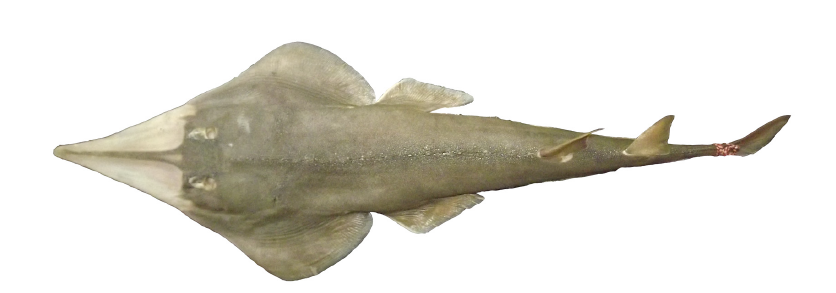Discovery of a new species of giant guitarfish in Bangladesh raises country’s ambition about solid taxonomic research
‘Pitambori’ is how local fishermen call guitarfish species found in Bangladesh. It is also how they refer to a newly discovered species - Glaucostegus younholeei – described on the basis of 13 specimens collected at a fish landing site in Cox’s Bazar district in Bangladesh. Even though the species belongs to the Glaucostegidae family - commonly known as giant guitarfishes – it shows clear morphological and genetic differences from its closest relatives. Giant guitarfishes are primarily inhabitants of subtropical and tropical inshore areas of the Indo-Pacific and Eastern Atlantic, but one species has also been found in the Mediterranean. They occur close to the sea-bottom and feed mainly on benthic invertebrates and small fish. Glaucostegus younholeei has so far only been found in Bangladesh (hence its common name Bangladeshi guitarfish), but it may also be present in other areas of the Bay of Bengal or even in other regions.
 |
 |
| Prof. Kazi Ahsan Habib during the taxonomy course @FAO | Yayedul Islam during the course training sessions. @FAO |
Primary insights into the existence of the new giant guitarfish species were provided during the training course on basic taxonomy and identification of marine fish and macroinvertebrates organized from 15 to 27 June 2019 by the Department of Fisheries at the Ministry of Fisheries and Livestock in Chattogram, Bangladesh, and the Food and Agriculture Organization of the United Nations (FAO). Confusion aroused about two sexually mature giant guitarfish male specimens tentatively identified as Glaucostegus granulatus, which presented an unusual small body size. Given that differences in life-history traits, such as sexual maturation, may be indicative of distinct forms within species complexes, it was concluded that the two “dwarf” specimens of G. granulatus observed during the course could represent a distinct yet undescribed species confused under this name. Prof. Dr. Kazi Ahsan Habib and Md. Jayedul Islam - two participants of the training course – inspired by the findings collected additional specimens and resolved the issue through morphological study and DNA barcoding analysis of four female and nine male individuals, and proved this dwarf form to be a new species to science.
Giant guitarfishes are globally threatened shark-looking rays. Like other elasmobranch fishes (i.e. sharks, rays, skates, sawfishes), their life-history traits are characterized by slow growth rates, late maturation, long gestation, and low fecundity which makes them particularly vulnerable to overfishing. In recent years, their conservation status has drawn global attention due to a high risk of extinction. According to the latest update from the International Union for Conservation of Nature’s (IUCN) Red List of Threatened Species that came out in July 2019, all six species of giant guitarfishes have been classified as Critically Endangered. All of the sixhave also been ranked in Appendix II of The Convention on International Trade in Endangered Species of Wild Fauna and Flora (CITES) due to a sharp population decline driven by high fishing pressure and their highly valued fins on the international market.
The discovery of a new species in Bangladesh is therefore very exciting and at the same time, it highlights the need to take appropriate steps for its further management.
 |
| Dorsal view of Glaucostegus younholeei from Cox’s Bazar, Bangladesh |
Taxonomy courses are part of the EAF-Nansen programme’s capacity development efforts in partner countries in Africa and the Bay of Bengal. The trainings forge collaboration among participants from different institutes, universities and research centres within a given country or region. This in turn promotes knowledge sharing and contributes to improving the quality of fishery data for a stronger future fisheries management. Thanks to the taxonomy training held in Chattogram, Bangladesh has realized an urgent need to strengthen the skills of national fishery and scientific officers to improve the identification of marine species for effective and sustainable fisheries management, especially nowadays when overfishing, climate change and marine pollution are impacting fishery resources like never before. Bangladesh also stressed the ambition of the country to generate a greater level of engagement in taxonomic research, both within the country as well as at international level.
